Commentary: When Enough Cigar is Enough
16 Oct 2013
While smoking cigars is more of an art than a science, over the years we’ve tried to provide you with dozens of Tips to enhance your enjoyment. I hope you’ll take a moment to peruse our archives for everything from fixing an uneven burn and cigar auctions to winning the war on mold and establishing a good light. Many of these lessons are part of our Cigar University.
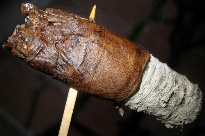 My quick observations today are far more subjective than the sort of info we usually provide in our tips. I don’t claim to have the answer because, more than likely, there is no one good solution. If anything, I’m hoping to open a dialogue in which I would encourage you all to participate.
My quick observations today are far more subjective than the sort of info we usually provide in our tips. I don’t claim to have the answer because, more than likely, there is no one good solution. If anything, I’m hoping to open a dialogue in which I would encourage you all to participate.
The topic, simply stated, is as follows: At what point do you stop smoking a cigar?
I realize this may sound like a silly question. But I ask because I’ve heard and witnessed a variety of different answers. For example, a number of enthusiasts set down a cigar before it reaches the band. Still others practice the polar opposite, resolutely smoking each stick down to the nub. Smokers from the latter school know the best time to quit is a few minutes after your fingers start burning because they’re too close to the encroaching flame.
I, like most cigar enthusiasts, fall somewhere between these two camps, allowing the cigar and the situation to dictate when it’s best for me to set down my cigar. Some cigars, namely those that perform poorly or develop an unpleasant taste in the final third, deserve a premature death. Others merit a long, drawn-out goodbye, especially those that improve as they progress. Obviously, though, if I’m smoking a cigar for a full review or Quick Smoke—rather than for my own pure enjoyment—I’ll burn it down to the end.
While the “play it by year†approach works well for me, only you can determine what’s best for you. So please share your strategy with fellow StogieGuys.com readers and tell us: How low do you go?
photo credit: Flickr

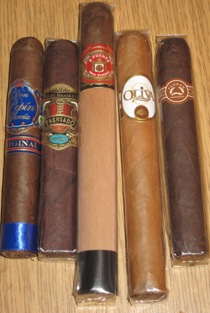 But in addition to charity and generosity, fine cigars, food, and drink are featured. Like many cigar events, attendees are given a card with the names of all the cigar makers in attendance, who then punch the card when you pick up your cigar from their table.
But in addition to charity and generosity, fine cigars, food, and drink are featured. Like many cigar events, attendees are given a card with the names of all the cigar makers in attendance, who then punch the card when you pick up your cigar from their table.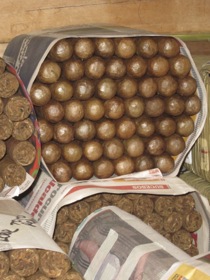 Everything from the basic definition — It’s aging after one year. No, that’s still resting; aging starts after three years. Well, I think two years is when it starts. — to which cigars benefit most from the process is a veritable minefield.
Everything from the basic definition — It’s aging after one year. No, that’s still resting; aging starts after three years. Well, I think two years is when it starts. — to which cigars benefit most from the process is a veritable minefield.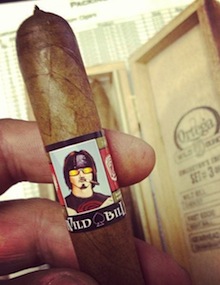 There were three:
There were three: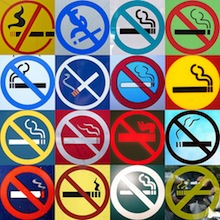 Smoking bans across the country have booted smokers out of restaurants, bars, and other places that wanted their business. Unpleasant weather, and creeping outdoor bans, compound the problem. The spread of bans means in many places you can only smoke in specialized cigar establishments. And eager business owners are seeking to welcome in cigar smokers.
Smoking bans across the country have booted smokers out of restaurants, bars, and other places that wanted their business. Unpleasant weather, and creeping outdoor bans, compound the problem. The spread of bans means in many places you can only smoke in specialized cigar establishments. And eager business owners are seeking to welcome in cigar smokers.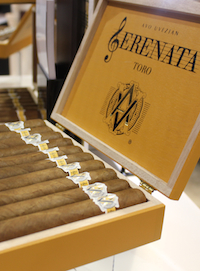 It’s my belief that quality is going up across the board in the cigar industry, and smoking plenty of samples only solidifies this opinoin. Obviously these are generalizations and no doubt there are exceptions, but it seems not only are the cigars being produced now better constructed than they were 5-10 years ago, they are better cigars that lack obvious flavor flaws. The result is good for consumers. Whether you buy discounted samplers online, or just pick up what looks interesting at your local cigar shop, odds are you’re going to end up with decent or good cigars.
It’s my belief that quality is going up across the board in the cigar industry, and smoking plenty of samples only solidifies this opinoin. Obviously these are generalizations and no doubt there are exceptions, but it seems not only are the cigars being produced now better constructed than they were 5-10 years ago, they are better cigars that lack obvious flavor flaws. The result is good for consumers. Whether you buy discounted samplers online, or just pick up what looks interesting at your local cigar shop, odds are you’re going to end up with decent or good cigars.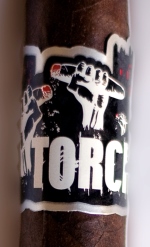 At this summer’s show, I met lots of people I didn’t know. I was, for example, mightily impressed by the men behind
At this summer’s show, I met lots of people I didn’t know. I was, for example, mightily impressed by the men behind  Patrick Ashby
Co-Founder & Editor in Chief
Patrick Ashby
Co-Founder & Editor in Chief Patrick Semmens
Co-Founder & Publisher
Patrick Semmens
Co-Founder & Publisher George Edmonson
Tampa Bureau Chief
George Edmonson
Tampa Bureau Chief